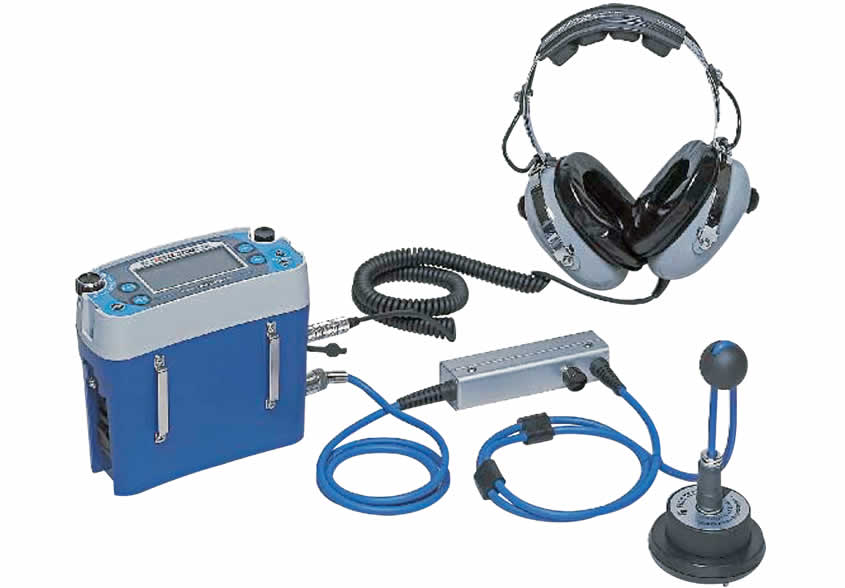Advanced Water Leak Detection Solutions for Your Home and Company
Advanced Water Leak Detection Solutions for Your Home and Company
Blog Article
Innovative Solutions for Very Early Detection of Water Leakages in Structures and Infrastructure
From sophisticated leak detection technologies to the deployment of IoT sensors for real-time tracking, the landscape of leak prevention is advancing quickly. Automated water circulation analysis systems are improving exactly how leakages are determined and addressed, leading the means for a proactive approach to water leakage discovery.
Advanced Leakage Discovery Technologies
Advanced leakage detection technologies, furnished with advanced sensing units and formulas, play a crucial role in quickly recognizing and determining water leaks in numerous settings. Electro-magnetic sensors can determine modifications in electro-magnetic fields created by water, providing yet one more layer of leakage discovery capacity.

IoT Sensors for Real-Time Surveillance
In the realm of contemporary water leakage detection, the assimilation of IoT sensing units for real-time surveillance stands for a crucial improvement in boosting proactive leakage detection abilities. These sensors offer continuous monitoring of water systems, giving real-time information on water flow rates, stress variations, and temperature changes. By leveraging IoT modern technology, these sensors can identify even the tiniest anomalies in water usage patterns, allowing early recognition of possible leaks prior to they escalate right into major issues.
IoT sensors send information to a central system, where sophisticated algorithms assess the information and produce informs or notifications when irregularities are discovered. This real-time monitoring capacity enables homeowner or center supervisors to quickly attend to leakages, reducing water damage, decreasing repair costs, and conserving water sources.
Additionally, IoT sensors can be incorporated with building administration systems, permitting computerized responses to identified leaks, such as closing off water shutoffs or triggering pumps to reduce the influence of leakages. Overall, the application of IoT sensors for real-time surveillance substantially improves the performance and performance of water leak detection in structures and framework.
Maker Discovering Algorithms for Leakage Forecast

One key advantage of using equipment understanding for leak prediction is its capacity to constantly learn and boost its accuracy in time. As even more data is collected and fed right into the algorithm, it can improve its predictions and adapt to changing conditions, inevitably enhancing the integrity of leak discovery systems.
Moreover, artificial intelligence algorithms can help in identifying subtle indicators of leakages that may go undetected by traditional monitoring techniques. water leak detection. By assessing intricate data embed in real-time, these algorithms can give very early warnings and notifies, enabling for punctual intervention and precautionary maintenance to minimize possible water damages and connected expenses
Using Thermal Imaging for Leakage Discovery
Thermal imaging modern technology offers an encouraging technique for finding water leaks in numerous systems and frameworks. By making use of infrared radiation and temperature variations, thermal imaging cameras can determine covert leaks that are not anchor easily visible to the nude eye.
Among the key advantages of thermal imaging for leakage discovery is its non-intrusive nature. Unlike typical approaches that might call for getting into wall surfaces or floors to find leakages, thermal imaging permits for non-destructive screening. This not only conserves time and lowers costs however likewise decreases interruption to the building or facilities being analyzed. Additionally, thermal imaging can rapidly scan large areas, giving a thorough review of potential leakage sources in a prompt fashion. In general, making use of thermal imaging modern technology improves the performance and precision of water leak discovery, making it a beneficial tool for preserving the honesty of buildings and infrastructures.
Automated Water Circulation Evaluation Systems
How can like it automatic water circulation analysis systems change the discovery and management of leaks in different systems and frameworks? Automated water circulation analysis systems offer an aggressive technique to leak detection by constantly monitoring water circulation prices and patterns. By establishing baseline data, these systems can swiftly identify variances that might show a leakage, allowing punctual intervention to avoid extensive damages.
These systems make use of innovative algorithms to evaluate real-time data and give prompt informs when abnormalities are detected, enabling quick action to be taken. Additionally, automated water circulation analysis systems can be integrated with structure administration systems or IoT platforms, boosting overall efficiency and making it possible for remote monitoring capabilities.
In addition, the data collected by these systems can be used for anticipating upkeep functions, helping to recognize prospective weak factors in the infrastructure before leakages happen. Generally, the execution of automatic water circulation analysis systems can substantially enhance leak discovery and administration techniques, find out inevitably resulting in cost savings, reduced water wastefulness, and increased sustainability in buildings and facilities.

Verdict
Finally, the assimilation of advanced leakage detection modern technologies, IoT sensors, device learning algorithms, thermal imaging, and automated water circulation analysis systems supplies ingenious solutions for early detection of water leaks in buildings and facilities. These innovations allow real-time monitoring, prediction of leaks, and efficient detection techniques to avoid water damages and wastage. Executing these options can aid in maintaining the honesty and sustainability of water systems in various setups.
Report this page